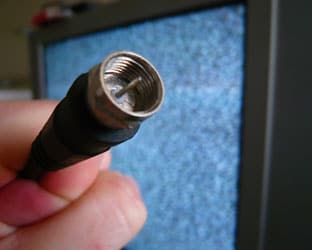…fail, fail again? That’s what Association of Maximum Service Television President David L. Donovan is saying about the latest device Motorola is trying to use to invade the white space between television stations. Said Donovan, “Once again the Motorola device failed to adequately detect DTV signals. The key issue was whether Motorola’s device could detect DTV signals when other DTV signals were also present, a critical issue because there will be multiple DTV signals operating in every market after the transition. According to yesterday’s tests, the device failed to accurately sense a DTV signal when there was a strong or even moderate DTV signal operating on the next channel, a situation that will occur in markets across the country. Simply put, in these situations the device would fail to detect a DTV signal, even though consumers would be able to receive the DTV signal with simple antennas. The device is likely to turn on to channels consumers are trying to watch. This device fails to protect consumers and has a long way to go before it can be released into the real world. I doubt Motorola would want this device anywhere near the channels it uses for its public safety equipment.”
Donovan concluded, “While white spaces proponents try to explain away failure upon failure, Canadian citizens are enjoying rural broadband on TV channels through a fixed, licensed system. If government policy makers want rural broadband, it is time to look northward and adopt a system that works.”
RBR/TVBR observation: Each failed test moves the possible implementation date for an Oklahoma Land Rush for unlicensed devices back, and that’s a good thing. We’re not engineers, but if we were, we’d be want to be pretty damn sure that our device was going to work before we took it in for a test. Maybe its time for the unlicensed device proponents to retreat quietly back to their laboratories so the rest of us – and the FCC — can concentrate on the DTV conversion.




